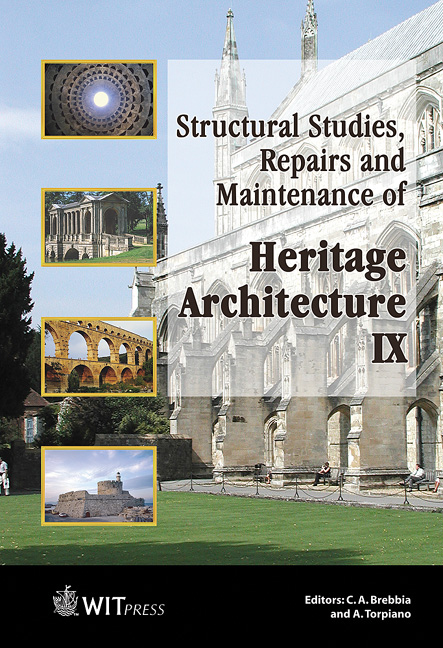Cathodic Protection Of Historic Steel Framed Buildings
Price
Free (open access)
Transaction
Volume
83
Pages
10
Published
2005
Size
1,227 kb
Paper DOI
10.2495/STR050471
Copyright
WIT Press
Author(s)
P. Lambert & C. P. Atkins
Abstract
The corrosion of early 20th century steel-framed structures is resulting in serious damage to the integrity and appearance of many historically important structures. Conventional repair technologies are expensive and disruptive and can result in large scale removal of original material for replacement with modern alternatives. Depending upon the causes of the deterioration, such traditional repair methodologies may not provide a satisfactory extension of service life. Cathodic protection, dating back to 1824, represents the first engineered solution to the problems of ferrous alloy corrosion. Developments in anode design and control/monitoring hardware have made the technique applicable to steel framed structures in a manner that is proving acceptable both commercially and from a conservation viewpoint. This paper discusses the practicalities of steel frame cathodic protection and the general approaches available for its application. It will also briefly discuss current research to properly establish many of the design and operational characteristics of the technique. Keywords: steel framed, heritage, corrosion, cathodic protection. 1 Introduction The form of steel frame building construction was initially employed in Chicago and subsequently used in most major western cities in the first two decades of the 20th century. This type of construction has resulted in serious consequences with respect to serviceability, safety and aesthetics. The identification of "Regent Street Disease" in the United Kingdom in the late 1970's highlighted the problems of steel-framed corrosion [1]. The problems
Keywords
steel framed, heritage, corrosion, cathodic protection.




